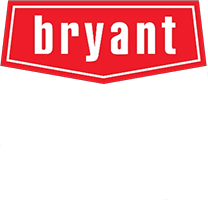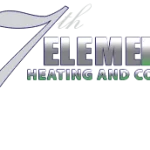Creating a healthy, comfortable, and energy-efficient home environment in the Treasure Valley is easier than you think.
For homeowners in Nampa, Idaho, the climate presents a unique challenge. From sweltering summer days to frigid winter nights, your home’s heating and cooling system works hard all year long. Ensuring your system is not just functional but optimized for efficiency and health is key to creating the comfortable sanctuary your family deserves. This guide explores modern solutions and essential practices to help you master your home’s indoor climate, save on energy costs, and enhance your family’s well-being.
Understanding Nampa’s Climate and Your HVAC System
The Treasure Valley’s semi-arid climate means we experience significant temperature swings. Summers can be intensely hot and dry, while winters bring freezing temperatures and snow. This puts a heavy demand on any heating and cooling system. An inefficient or poorly maintained unit has to work overtime, leading to higher energy bills, uneven temperatures, and potential breakdowns when you need it most.
An optimized HVAC system does more than just heat or cool the air. It manages humidity, filters out allergens, and circulates fresh air, contributing directly to your family’s health. For families who care about creating a safe and healthy indoor environment, understanding how your system can be enhanced is the first step toward achieving superior home comfort.
Beyond the Thermostat: Advanced Solutions for Modern Homes
Today’s HVAC technology offers more control and efficiency than ever before. If your home has inconsistent temperatures—perhaps a sweltering upstairs and a chilly downstairs—or if the dry Idaho air affects your comfort, these modern solutions can make a world of difference.
HVAC Zoning Systems
Why heat or cool the entire house when you only use a few rooms? An HVAC zone system divides your home into distinct areas, each controlled by its own thermostat. This allows you to customize the temperature in the living room, bedrooms, and kitchen independently, preventing energy waste and ending thermostat battles. It’s an ideal solution for multi-story homes or layouts with distinct living areas.
Whole-House Humidifiers
Idaho’s dry air can cause more than just static shock. It can lead to dry skin, irritated sinuses, and can even damage wood furniture and floors. A whole-house humidifier integrates directly with your furnace to add necessary moisture to the air circulated throughout your home, helping to improve respiratory health and overall comfort during the long winter months.
The Power of Prevention: Seasonal Maintenance Checklist
The single most effective way to ensure your system runs efficiently and lasts longer is through regular professional maintenance. Proactive care prevents costly emergency repairs and keeps your system operating at peak performance. Enrolling in an HVAC maintenance plan can make this process seamless.
| Task | Spring/Summer (AC Tune-Up) | Fall/Winter (Furnace Tune-Up) |
|---|---|---|
| Filter Check | Clean or replace air filters | Clean or replace air filters |
| Coil Cleaning | Inspect and clean evaporator and condenser coils | N/A |
| Electrical Inspection | Tighten connections and check voltage | Check all electrical components for safety |
| Moving Parts | Lubricate motors and bearings | Lubricate all moving parts |
| System Test | Check thermostat calibration and system controls | Test ignition system and safety controls |
Did You Know?
- The EPA reports that indoor air can be two to five times more polluted than outdoor air. Regular HVAC maintenance, including filter changes, is crucial for improving your home’s air quality.
- A programmable or smart thermostat can save you up to 10% on your heating and cooling costs each year by automatically adjusting the temperature when you’re away or asleep.
- Energy-efficient heat pumps, which provide both heating and cooling, can reduce electricity use for heating by approximately 50% compared to electric resistance heating such as furnaces and baseboard heaters.
Top 5 Tips for Lowering Your Nampa Energy Bills
Beyond professional service, there are simple steps you can take to maximize your system’s efficiency and lower your utility costs.
1. Seal Air Leaks
Check for drafts around windows, doors, and electrical outlets. Use caulk and weatherstripping to seal leaks and prevent conditioned air from escaping.
2. Use Window Coverings
In the summer, use blinds or curtains to block direct sunlight and reduce solar heat gain. In the winter, open them up to let the sunlight in and naturally warm your home.
3. Check Your Insulation
Proper attic insulation is one of the most effective ways to improve your home’s energy efficiency. It helps keep your home warmer in the winter and cooler in the summer.
4. Don’t Block Vents
Ensure that furniture, rugs, and drapes are not blocking your air vents. Obstructed airflow forces your system to work harder to circulate air.
5. Upgrade When Necessary
If your HVAC system is over 15 years old, it may be time to consider a replacement. Modern units are significantly more efficient. Whether you need a new furnace installation or an air conditioning replacement, the long-term energy savings can offset the initial investment.
Your Local Nampa HVAC Experts
At 7th Element Heating and Cooling, we are proud to serve our neighbors in Nampa and across the Treasure Valley. Our team understands the specific challenges of our local climate. We’re committed to providing honest, reliable service without upselling you on things you don’t need. Our goal is to be your trusted partner in maintaining a comfortable, safe, and efficient home for your family.
Ready to Enhance Your Home’s Comfort?
Whether you need an emergency repair, a routine tune-up, or want to explore modern efficiency upgrades, our team is here to help.
Frequently Asked Questions
How often should I have my HVAC system serviced in Nampa?
We recommend professional servicing twice a year to ensure optimal performance through Nampa’s distinct seasons. An AC tune-up in the spring and a furnace check-up in the fall will prepare your system for the peak demands of summer and winter.
Are HVAC zoning systems expensive to install?
The cost can vary depending on the size of your home and the complexity of the installation. However, the energy savings from only heating or cooling the areas you’re using can provide significant long-term value and offset the initial investment.
What’s the ideal humidity level for a home in Idaho?
For maximum comfort and to protect your home’s woodwork, the ideal indoor humidity level is between 30% and 50%. A whole-house humidifier can help you consistently maintain this level during our dry winters.
Can a new air conditioner really lower my energy bills?
Absolutely. Modern air conditioning units are far more energy-efficient than models from 10-15 years ago. Upgrading an older, inefficient unit can lead to substantial savings on your monthly cooling costs, especially during Nampa’s hot summer months.
Glossary of Terms
HVAC: An acronym for Heating, Ventilation, and Air Conditioning. This term refers to the entire system used to control the temperature, humidity, and purity of the air in a home.
Heat Pump: A versatile system that can both heat and cool a home. In summer, it moves heat from inside your home to the outside. In winter, it reverses the process, extracting heat from the outdoor air and moving it inside.
Zoning System: A setup that divides a home into different areas (zones), allowing for independent temperature control in each one. This is achieved using dampers in the ductwork that open and close to direct air where it’s needed.
SEER Rating: Stands for Seasonal Energy Efficiency Ratio. It measures the cooling efficiency of an air conditioner or heat pump. The higher the SEER rating, the more energy-efficient the unit is.

